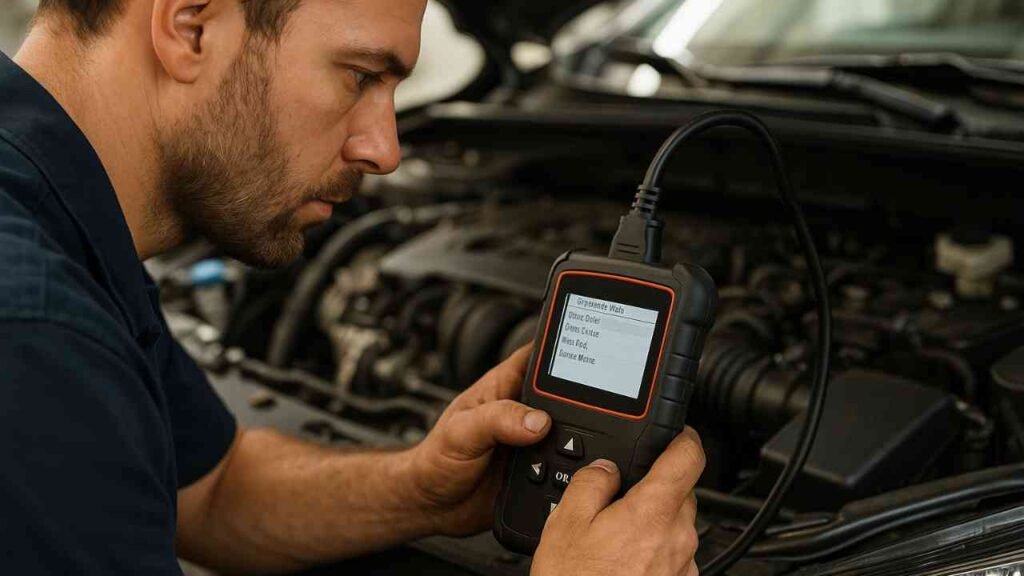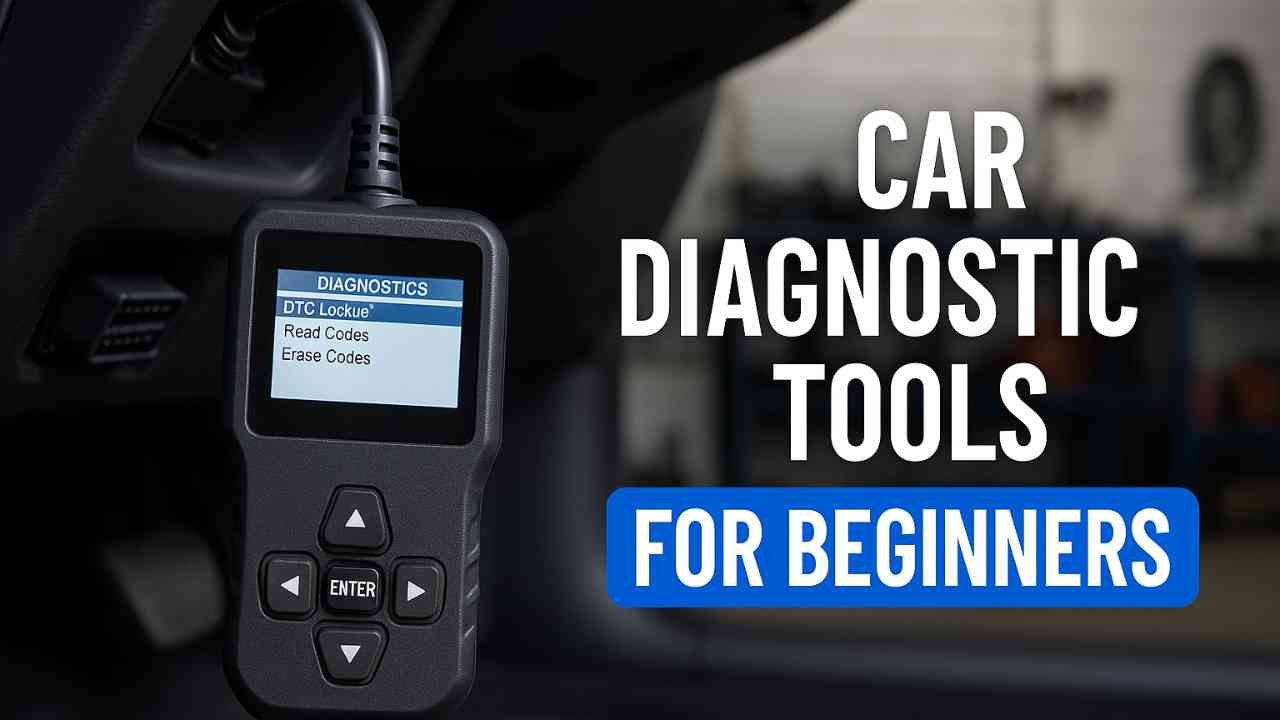Introduction
Car diagnostics have become a crucial part of vehicle maintenance. For beginners, using diagnostic tools might seem complicated, but with the right guidance, you can easily detect and fix common car issues. In this guide, we’ll introduce you to basic car diagnostic tools and how you can use them to maintain your car efficiently.
What Are Car Diagnostic Tools?

Understanding the Basics:
Car diagnostic tools are devices that help identify problems in your vehicle. These tools are used to scan the car’s engine and other systems, giving you a diagnostic code that points to a specific issue. Whether it’s an engine misfire, faulty sensors, or emissions problems, these tools make it easier to pinpoint and resolve issues.
Types of Car Diagnostic Tools
OBD-II Scanner:
The OBD-II (On-Board Diagnostics) scanner is the most common diagnostic tool used today. It plugs into your car’s OBD port (usually under the dashboard) and communicates with the car’s computer system to provide error codes. This tool can give you a quick overview of the vehicle’s health.
Code Reader vs. Scan Tool:
- Code Reader: This tool reads error codes from your vehicle’s computer but doesn’t provide extensive data or real-time monitoring.
- Scan Tool: A more advanced option, scan tools can do everything a code reader can, but they also offer advanced diagnostics, including live data and freeze-frame data.
How to Use a Car Diagnostic Tool
Step-by-Step Guide for Beginners:
- Locate the OBD-II Port: Find the OBD-II port under the dashboard near the driver’s side.
- Connect the Diagnostic Tool: Plug the scanner or code reader into the OBD-II port.
- Turn On the Car: Turn your car to the “On” position without starting the engine.
- Read the Codes: Follow the instructions on the diagnostic tool to retrieve the error codes.
- Interpret the Codes: Look up the diagnostic codes in the user manual or an online database to understand what needs to be fixed.
Common Issues Diagnosed with Tools
Engine Misfire:
One of the most common issues detected by diagnostic tools is engine misfire. A misfire happens when one or more cylinders fail to fire properly, leading to rough idling, poor acceleration, or reduced fuel efficiency.
Faulty Sensors:
Sensors, such as the oxygen sensor or mass airflow sensor, play a critical role in engine management. A diagnostic tool can help detect these issues, preventing further damage to the engine.
Choosing the Right Diagnostic Tool for Your Needs
Basic vs. Advanced Tools:
- Basic Diagnostic Tools: If you’re just starting out and want to check for basic issues like check engine light codes, a simple OBD-II scanner or code reader will suffice.
- Advanced Diagnostic Tools: If you plan on doing more in-depth diagnostics, consider investing in a more advanced scan tool. These tools offer additional features such as live data monitoring, ABS codes, and advanced system analysis.
Maintenance Tips for Diagnostic Tools
Keep Your Tools in Good Condition:
Diagnostic tools should be handled with care. Store them in a safe, dry place, and make sure to update the software regularly to ensure accurate readings. Avoid dropping or damaging the connectors, as they are essential for communication with the vehicle.
Conclusion
Car diagnostic tools are essential for any beginner who wants to take control of their car’s health. By using these tools, you can easily identify problems, save on repair costs, and ensure that your car runs smoothly for years to come. With the right tool in hand, diagnosing your vehicle can be simple and efficient.
